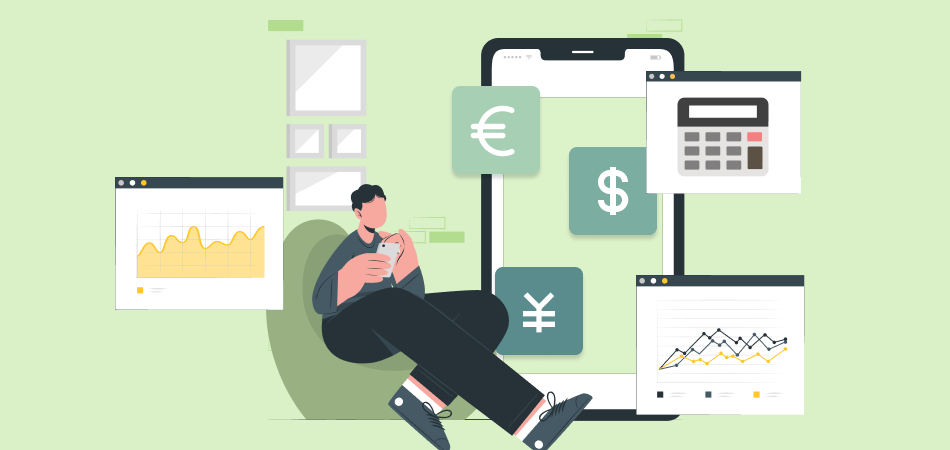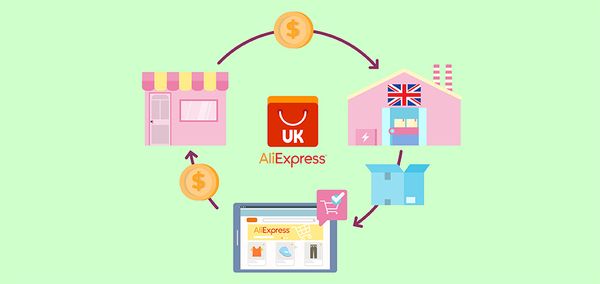Why Is Setting a Price So Complex in E-commerce

Setting the right price for products in e-commerce is not as straightforward as it may seem. It’s a delicate balancing act that considers factors like cost, competition, market demand, customer behavior, and even psychological pricing strategies. Getting the price wrong can lead to lost sales, reduced profit margins, or a damaged brand reputation.
Understanding the complexities of e-commerce pricing is essential for any business aiming to succeed in today’s competitive digital marketplace.
Factors Influencing Pricing Complexity
Below are some key elements that contribute to pricing complexity:
Cost of Goods Sold (COGS)
The most basic factor in setting a price is the cost of producing or acquiring the product, also known as the cost of goods sold (COGS). This includes manufacturing costs, shipping, taxes, and packaging. However, simply marking up these costs to make a profit is not enough. E-commerce businesses must also factor in operational costs such as website maintenance, digital marketing, and customer support.
Competition and Market Research
Pricing must be competitive in the e-commerce space, where consumers have easy access to price comparisons. Sellers often monitor their competitors' prices and adjust their own accordingly. However, blindly following competitors' prices can be risky. It’s essential to consider factors like the product's value proposition, differentiation, and unique selling points (USPs) before matching or undercutting competitor prices.
Customer Perception and Demand Elasticity
Pricing is not just about numbers; it’s about how customers perceive value. Price sensitivity can vary based on the type of product, market segment, and brand loyalty. Some customers may prioritize quality over price, while others may be more cost-conscious. Understanding demand elasticity—how demand changes in response to price fluctuations—is crucial for determining how much a customer is willing to pay.
Seasonality and Market Trends
In many e-commerce niches, prices fluctuate due to seasonality or current trends. For example, fashion retailers may need to adjust prices for seasonal collections, while tech companies may experience price drops as newer models are released. Timing is crucial, and businesses need to account for how demand rises or falls throughout the year to optimize pricing strategies.
Dynamic Pricing and Technology

|
Adapt Your Product Prices Automatically DSers Automatic Pricing - Pre-set Pricing Rule to mark-up your product price automatically |
With the rise of advanced pricing tools, dynamic pricing is becoming more common in e-commerce. Dynamic pricing allows businesses to automatically adjust prices based on various factors like competitor pricing, demand fluctuations, and inventory levels. This requires robust software systems and data analysis to ensure that the price adjustments are accurate and profitable.
International Pricing Considerations
For global e-commerce businesses, pricing becomes even more complex due to differences in currencies, taxes, shipping costs, and local purchasing power. Additionally, businesses must account for customs duties, tariffs, and varying regulations across different countries, all of which impact the final price of a product in different markets.
Long-Term Profitability vs. Short-Term Sales
Businesses often face the dilemma of balancing short-term sales with long-term profitability. A low price may generate quick sales but can harm long-term margins and the perceived value of the brand. On the other hand, setting a higher price may slow initial sales but contribute to a higher lifetime value per customer and increase brand prestige.
Strategies to Simplify Pricing Complexity in E-Commerce
Here are some key strategies to simplify pricing complexity in the e-commerce space:
Cost-Plus Pricing Model
The cost-plus pricing model is one of the simplest approaches to pricing. It involves adding a fixed markup to the cost of goods sold (COGS) to determine the final price. While this model ensures that all costs are covered, it doesn’t always account for customer willingness to pay or competitor prices. Businesses can use this method as a baseline but should adjust based on market factors.
Competitive Pricing Strategy
Competitive pricing involves analyzing competitors' prices and positioning your product accordingly. This strategy is especially important in saturated markets where consumers are constantly comparing prices. Competitive pricing can be broken down into:
Penetration pricing: Setting a low price initially to gain market share and attract customers.
Skimming pricing: Starting with a high price and gradually lowering it as demand decreases or new competitors emerge.
Value-Based Pricing
Value-based pricing focuses on what customers are willing to pay for the perceived value of the product, rather than simply marking up costs. This requires a deep understanding of the target audience, their needs, and how the product solves their problems. The challenge with this approach is gathering accurate data on customer value perceptions and being able to adapt to changing preferences.
Psychological Pricing
Psychological pricing strategies are designed to influence consumer behavior by leveraging cognitive biases. Some popular techniques include:
Price anchoring: Displaying a higher "original" price next to the current price to make the offer seem like a bargain.
Odd-even pricing: Pricing items with odd numbers (e.g., $29.99) to make the product appear cheaper than it actually is.
Prestige pricing: Setting higher prices to create a sense of exclusivity or luxury.
Subscription Pricing Model
Setting a recurring price can simplify pricing complexity for e-commerce businesses that offer subscription-based services or products. This model works well for businesses offering consumables, like beauty products, food, or digital services. The predictable revenue stream from subscriptions can help businesses plan for future growth and ensure long-term customer retention.
Geographic Pricing
If your e-commerce business operates globally, geographic pricing allows you to set different prices based on customers’ locations. For example, products sold in a developed market may be priced higher than those in emerging markets, based on local purchasing power and market conditions. This approach also helps cover additional shipping and handling costs in different regions.
Promotional Pricing
Promotional pricing involves temporary discounts or offers to attract customers or drive sales. This strategy can be highly effective for clearing inventory, launching new products, or increasing customer traffic. However, businesses must be cautious with excessive promotions, as they can erode brand value or create price expectations that are difficult to maintain in the long term.
How to Set Prices in Dropshipping
Setting the selling price for a dropshipping product requires balancing several key factors to ensure profitability while staying competitive in the market. Here’s a detailed approach to setting the right selling price in a dropshipping business:
1. Understand Your Costs
Before you set a price, you need to account for all associated costs. The core cost in dropshipping is typically the wholesale price you pay to your supplier for the product. However, there are other costs to consider:
Shipping fees: Some suppliers offer free shipping, but others may charge for it.
Platform fees: If you’re selling on platforms like Shopify, eBay, or Amazon, there may be transaction fees, listing fees, and commissions.
Payment processing fees: PayPal, Stripe, and other payment processors charge transaction fees that need to be factored in.
Advertising costs: Your marketing campaigns on platforms like Google Ads or Facebook Ads.
Additional operational costs: Website hosting, apps or tools used for order fulfillment, customer service costs, etc.
Once you’ve calculated these costs, you can set a base for your pricing.
2. Markup Strategy
The most common way to set a selling price in dropshipping is through a markup on the cost of the product. The markup varies based on the product’s category, competition, and profit goals. Here are two main methods for determining the markup:
Standard Percentage Markup: A common practice is to apply a fixed percentage markup, such as 100% or 200%. For example, if the cost of a product is $10, applying a 100% markup would give you a selling price of $20.
Keystone Pricing: This involves doubling the cost of the product. For example, if your product costs $10, your selling price would be $20. This works for many types of products, especially in niche markets.
3. Consider the Value Proposition
Customers don’t just buy products—they buy value. If your product has unique selling points (USPs), such as better quality, additional features, or superior customer service, you can justify charging a higher price. For instance, if your product is high-quality, offers fast shipping, or has a bundle, you may be able to charge more than competitors who offer generic versions.
4. Apply Psychological Pricing
Psychological pricing tactics can influence buying behavior:
Charm Pricing: Use prices ending in .99 or .95 (e.g., $19.99 instead of $20). This makes the price seem lower and encourages customers to make a purchase.
Price Anchoring: Display a higher “original price” next to your discount price (e.g., Was $49.99, Now $29.99). This strategy makes the product seem like a better deal.
5. Account for Profit Margin Goals
Dropshipping is a business model that often operates on thin margins. Ideally, you want to set a price that covers all costs and allows you to generate a reasonable profit. However, depending on the product type, competition, and niche, some products may allow higher margins (e.g., luxury items) while others might be more competitive and have lower margins.
For example:
Low-ticket products (e.g., small gadgets, accessories) might have lower margins but higher sales volume.
High-ticket products (e.g., electronics, expensive items) tend to have higher margins but might sell less frequently.
How to Use Data to Optimize Pricing
The complexity of e-commerce pricing can be alleviated with the right data. Modern pricing strategies often rely on data analytics and AI tools to make informed pricing decisions. Here are some ways data can help optimize pricing:
Market Research Tools
Using market research tools to track competitor prices, industry trends, and customer behavior can provide valuable insights. Tools like Google Trends, price tracking software, and social listening platforms can help identify changes in demand and price elasticity, allowing businesses to adjust prices accordingly.
AI-Powered Pricing Tools
AI-powered dynamic pricing tools use algorithms to adjust prices in real time based on factors like demand fluctuations, competitor pricing, inventory levels, and customer preferences. These tools can help businesses find the optimal price point, maximize profits, and remain competitive.
A/B Testing
A/B testing, or split testing, is an effective way to determine which price point performs best with your target audience. By testing different price points and monitoring the conversion rate, businesses can learn which pricing strategies resonate most with customers and optimize for the highest sales volume or profit margins.
Conclusion
Setting prices in e-commerce is a multifaceted challenge that requires careful thought and continuous adjustment. The complexities of cost considerations, competition, customer behavior, and psychological factors make pricing an ongoing puzzle for many businesses.
By employing a combination of strategic approaches, leveraging data analytics, and continuously monitoring market trends, businesses can simplify the process and ensure that their pricing strategies align with both customer expectations and profitability goals. In the fast-paced e-commerce world, mastering the art of pricing is crucial for staying competitive and driving sustained business growth.











 Company
Company
 Why Choose DSers
Why Choose DSers
 Blog
Blog
 Help Center
Help Center




 Live Chat
Live Chat